Is This Duck Kosher? It’s Complicated
The case of the Muscovy duck cannot be settled because the rules themselves are not really known.
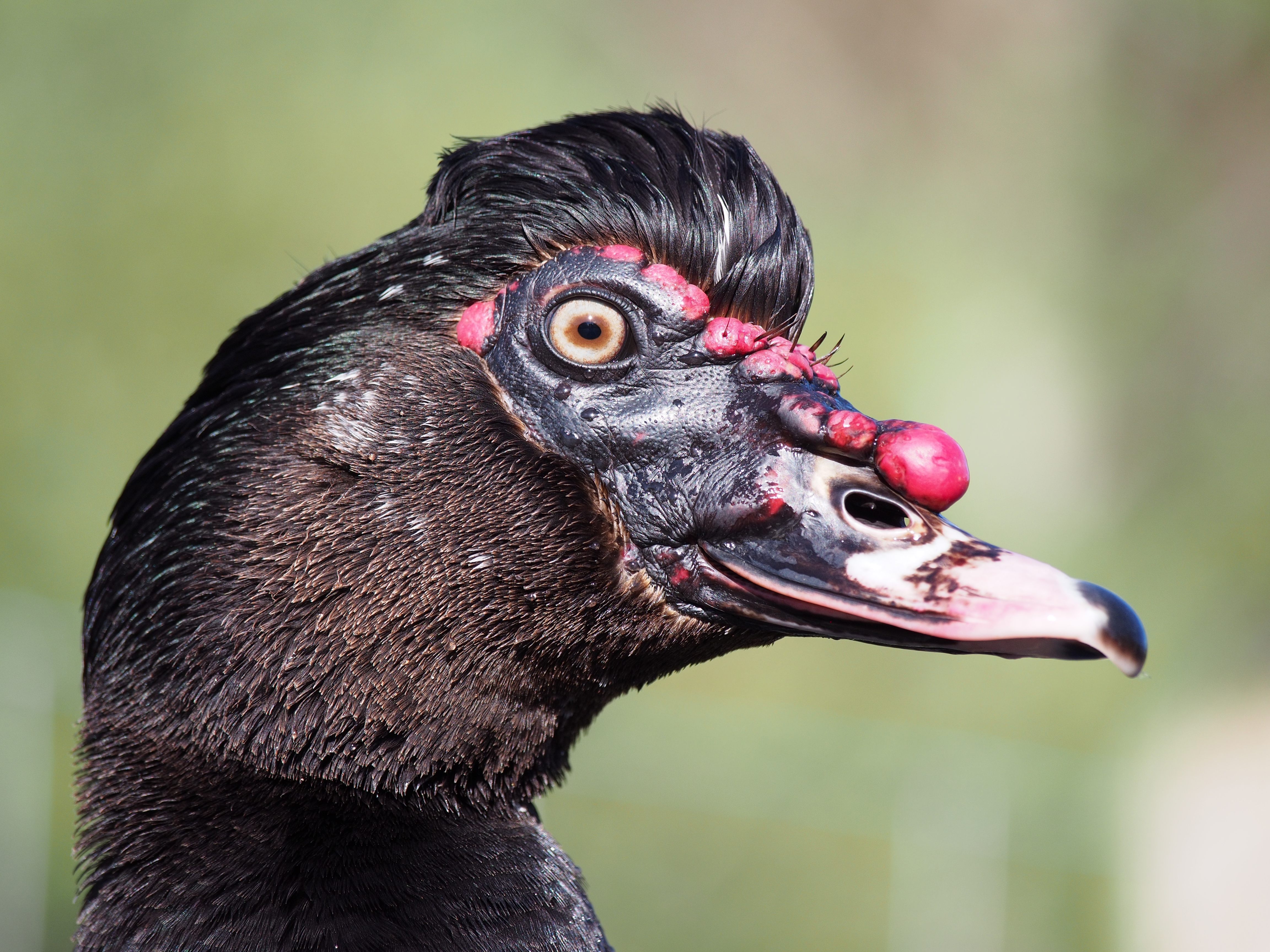
The basics of Jewish dietary law—the laws of kashrut—are fairly well-known: no pork, no shellfish, no milk and meat together. But there are many, many more laws than that, some of which are unclear, some of which are localized and don’t necessarily apply to all countries, and many of which have never really been settled. The case of the Muscovy duck is one of the most fun.
The rules of kashrut have a couple of issues that destabilize the entire process of figuring out what Jews can and cannot eat. One of these fundamental issues is that the laws don’t necessarily follow any larger philosophy. Jewish scholars have long divided the laws of Judaism into a couple of different categories. Mishpatim—the -im and -ot endings of words signify plurals in Hebrew—are laws that are self-evident to the survival of a society, like “don’t murder” or “don’t steal.” The edot are laws usually surrounding holidays, symbolic rules designed to memorialize events or bring a community together, like wearing a yarmulke or not eating bread on Passover. And then there are the chukim.
The chukim are laws that make no sense. They are sometimes phrased in ways to make following them more palatable; for example, that these are laws passed down directly from God, and it is not necessary that we understand them. The rules of kashrut are sometimes, but not always, placed in this category.

Another fundamental issue with the laws of kashrut is the lack of a Jewish governing body. Judaism has no centralized force, as Catholicism does with the Vatican. Instead, there are simply a bunch of extremely learned dudes, throughout thousands of years of history, who are considered very smart and knowledgeable and whose arguments about the various laws are widely read and sometimes adopted. But these dudes—usually but not always given the title of Rabbi—have disagreements, and their own followings.
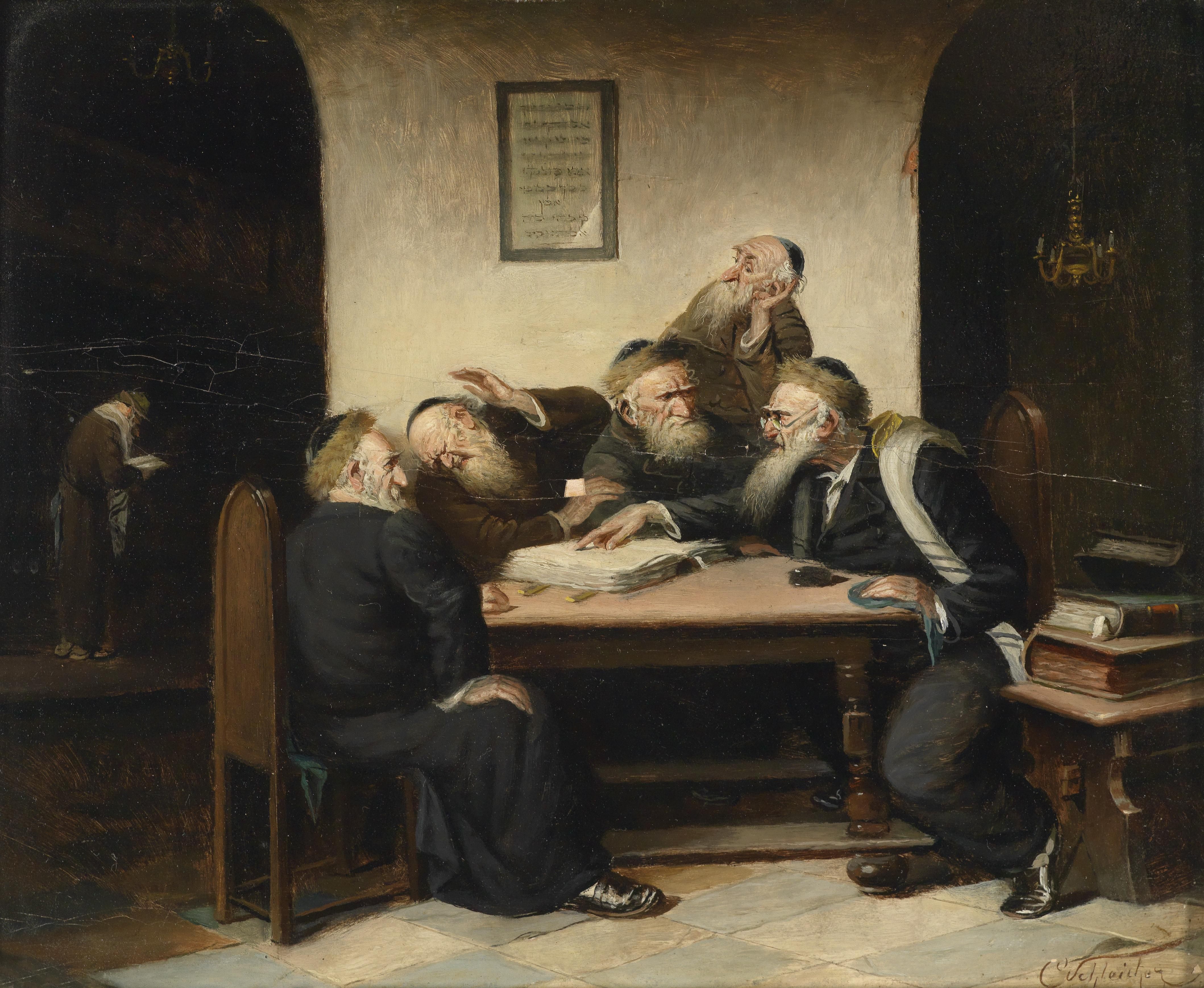
Because Jews are scattered all over the globe, there is a great diversity in thinking. Different environments call for different rules. And the rules in the Torah are not always clear-cut, so different communities will follow the suggestions of different learned dudes.
The laws of kashrut are a big grab-bag of different types of rulings. Sometimes they’re clear prohibitions on categories, like a general ban on consuming blood. Sometimes they’re specific in giving guidelines: You can only eat fish that have both fins and scales, which disqualifies, say, sharks. Here’s the exact line, translated, from Leviticus: “These you may eat of all that live in water; anything in water, whether in the seas or in the streams, that has fins and scales—these you may eat.”
But even those guidelines can be troublesome. Like, here’s a question: Do sharks have fins and scales? Fins, obviously, yes. Scales? Well, haha, sort of. Turns out sharks are actually covered completely in placoid scales, microscopic spine-like scales. This wasn’t discovered for a couple of thousand years after Jews had already declared shark forbidden. So can Jews eat shark now? Generally, no: A bunch of those learned dudes decided that the reference to “scales” must have meant scales you can actually see and remove. What about, say, swordfish, which has scales when young but sheds them when mature? Responses vary: Generally, Orthodox Jews won’t eat them, but Conservative Jews (at least, those who keep kosher, or who care about these intricacies) will.
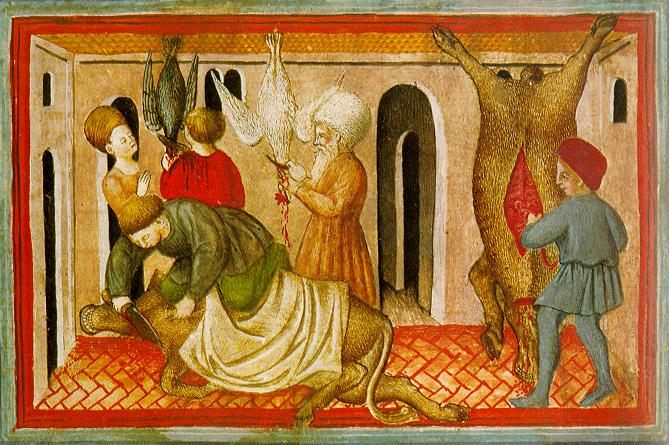
The rules for birds are, if anything, even worse than the ones for fish, which makes it even more difficult to ascertain where the Muscovy duck falls in all of this. The Torah doesn’t even bother setting out guidelines; it simply lists a bunch of birds that are forbidden, and says you can eat any other bird. Because the Torah was written thousands of years ago in an archaic form of Hebrew, we can’t necessarily translate and identify all these species definitively. One of the forbidden species would transliterate as atalef. In modern Hebrew, that’s… a bat. Which is not a bird. Most people interpret it that way, assuming that the bat was thought to be some kind of bizarre bird at the time, but not everybody does. Nobody is quite sure if atalef had the same meaning then as it does now, and some early Rabbinic discussion of the Torah described the atalef as laying eggs, but also raising its young. This has led some scholars to believe that the atalef is actually some variety of screech owl, or even—this is a serious argument that was seriously made—a platypus.
There are two separate lists of birds that are forbidden, one in Leviticus and one in Deuteronomy. There are some overlaps, but there are 24 different Hebrew names for birds in these lists. Those are confidently translated by various sources into modern English and typically include the following species: Eagle, vulture (the bearded vulture, white vulture, and black vulture are listed individually), kite, osprey, kestrel, raven, ostrich, jay, sparrowhawk, goshawk, owl, gull, little owl, starling, magpie, heron, cormorant, pelican, stork, hoopoe, and atalef. Sometimes you’ll see discrepancies, like one species listed in Leviticus as “heron” and in Deuteronomy as “ibis,” despite being the same Hebrew word. Sometimes you’ll see archaic English terms, like “sea-mew” for gull and “ossifrage” for bearded vulture.
I left one out of that list, because it’s very fun. One, in the Leviticus list, would transliterate to tinshemet. What, you might ask, is a tinshemet? Nobody knows. Sometimes it’s translated as a swan, some other type of owl, or (again!) as a bat. The same word shows up again a little bit later, under a list of forbidden animals that move along the ground, grouped in with lizards and weasels. There is a minor conspiracy theory that because it referred to both a bird and a lizard, that this word was the name of a flying dinosaur that never went extinct.

Anyway, that list of birds is, obviously, total trash if you’re trying to expand it outwards and figure out what you can and cannot eat. We don’t know whether those words were referring to specific species or whole categories of birds, and certainly many more species have been discovered since the Torah was set down. Scholars, to make up for this, have tried to see the patterns in the banned birds, and then use those patterns to create rules that could apply to species new to Jews, like, say, an unusual duck native to the Americas. This is obviously a fraught endeavor if you subscribe to the belief that the laws of kashrut are chukim—totally senseless.
Over the past 2,000 years, Jewish scholars have arrived at a couple of broad conclusions about what was meant by these particular 24 species. Or, well, 22 species and whatever tinshemet and atalef are supposed to be. In general everyone pretty much agrees that there is a strong bent towards banning raptors, or birds of prey. Even those birds that are not really considered birds of prey, such as the heron and stork, are hunters. Predators. In Hebrew, the word for predator is dores, and this is a very good start. Lots of birds that are not specifically listed can be assumed to be banned, because they are very similar to the ones on the list. The red-tailed hawk, say. Shrikes. Penguins. All birds perceived as predators.
Around the year 200, somewhere between 100 and 200 rabbis crafted the Mishnah, the first major work of rabbinic criticism and a compendium of Jewish oral history. These rabbis, in part, attempted to explain some of the stuff in the Torah that didn’t make sense, including the laws of kashrut. They ended up with a couple of bonus guidelines to define a dores. For example: A dores eats its prey while still alive. A dores holds prey down with its claws and rips off pieces to eat, or uses its talons to lift food to its mouth. When a dores bird stands on a rope, it splits its toes, meaning two lie in front and two in back.
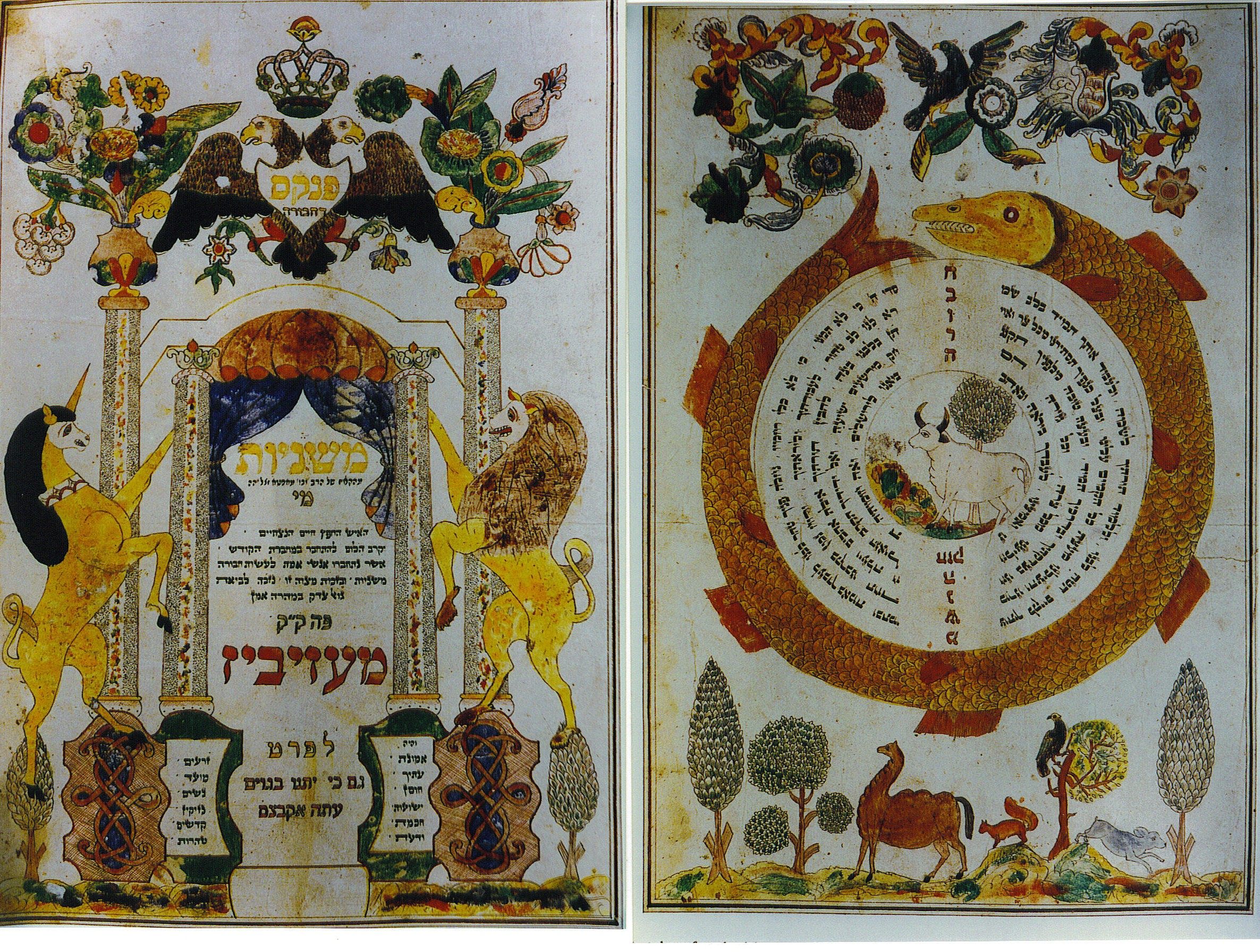
These guidelines are sort of arbitrary and mostly based on the (very limited) understanding of natural science at the time. For example, chickens eat plenty of animals while still alive: worms, grubs, flies. Invertebrates, apparently, were not really considered “animals” at the time.
The Mishnah also provided, helpfully, some rules as to what an acceptable bird might look like. A non-dores bird has an extra toe, on the back of its ankle, like a spur. A non-dores bird has a crop, which is an anatomical structure in some birds used to store food before digestion. A non-dores bird has a peelable gizzard. This is actually a rule! If you find a new bird and you’re not sure if you can eat it, you have to murder it, dissect it, find the gizzard, and attempt to peel off some membrane.
Just in case these rules weren’t unhelpful enough, there’s another wrinkle. In general, birds of prey are off-limits, no matter what. But for all the other birds, when there is debate over whether you can or cannot eat it, you rely on mesorah.
Mesorah is sort of the oral tradition of Judaism. In this case, it means that if the ruling is unclear, but there is a history of Jews eating this particular species, then that species will be permitted. It’s circular, yes: To be considered kosher, you have to have already been eating it, but how can you eat it if you’re not sure it’s considered kosher? Regardless! Mesorah is commonly called upon in the case of the Muscovy duck.
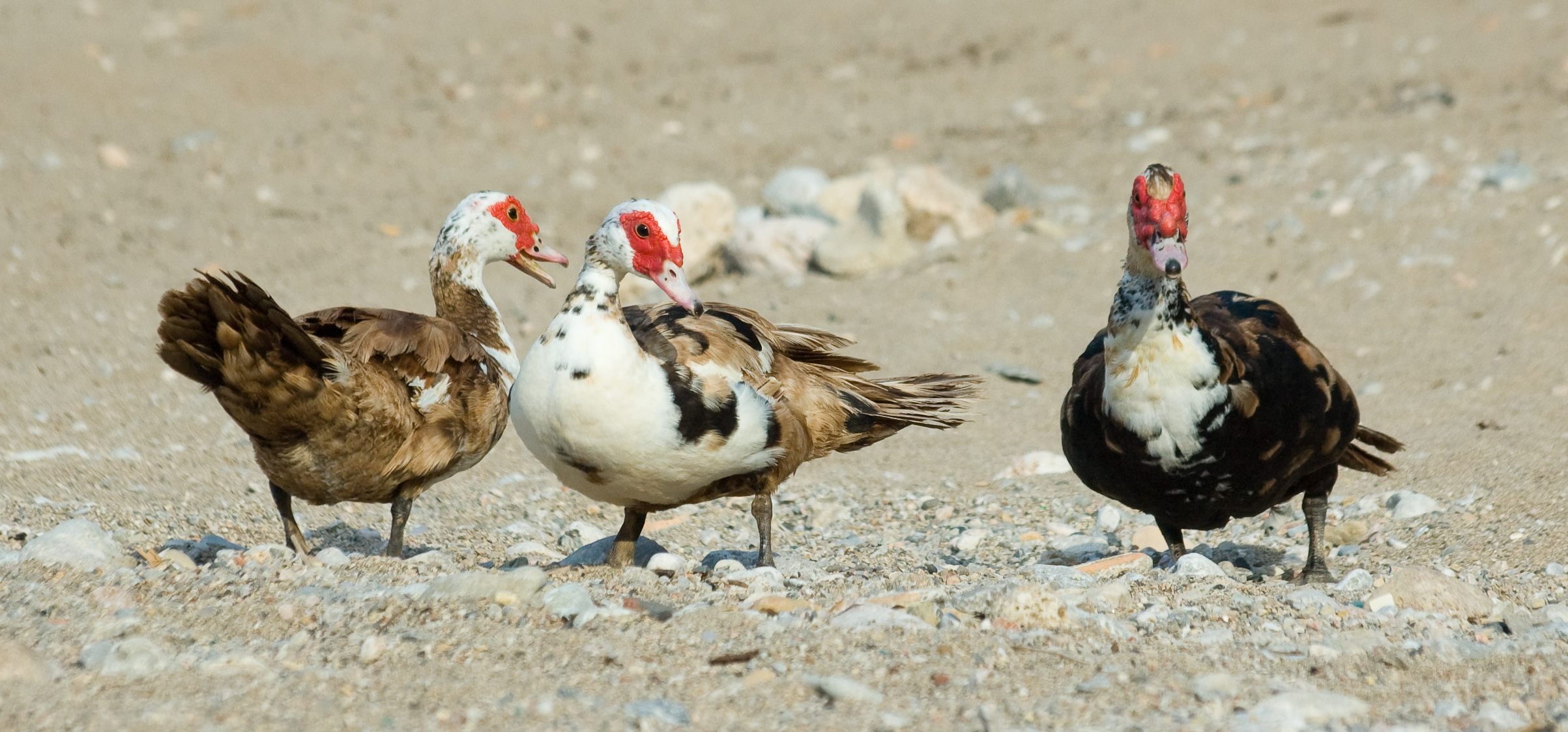
Basically the entire world’s population of domesticated ducks all descend from the mallard, which probably originated in Eastern Europe. The major exception is the Muscovy duck, which, despite its Russian-sounding name, is native to the New World, from Mexico and farther south. It’s not particularly closely related to the mallard, though it too has been domesticated for thousands of years. The Muscovy duck is larger than a mallard, usually black and white, and with characteristic caruncles on its face—you know, those knobbly fleshy things more associated with turkeys.
The Muscovy duck was, upon its discovery by Europeans, pretty much immediately sent to the Old World, where it was raised like other ducks. It can actually breed with mallards; the offspring are called mulards, or mules, and are common in foie gras production. Jews in Russia started eating it pretty much immediately, seeing it as, well, a duck. Jews in the Southern U.S., as well as those in Central and South America, ate it, too—at least, until 1861.
Ari Z. Zivotofsky and Zohar Amar, professors at Bar Ilan University, have written two extensive histories of the Muscovy duck’s place in Jewish law. They write that, in 1861, a rabbi who had just moved to New Orleans found his new Jewish community was eating a weird duck he’d never seen before. He wrote to some other rabbis back in Europe, who said that there was no mesorah on the Muscovy duck, and further that the eggs looked sort of odd, and so it should be banned. Those rabbis seem to have been given some incorrect information, including that the Muscovy duck grabs prey out of the air with its claws (it doesn’t), lays greenish, spherical eggs (it doesn’t; the eggs look like any other duck egg), and that it mates with snakes (lol).
Rabbis in Argentina actually sent back two live Muscovy ducks to Europe—only one survived—for some other European rabbis to examine. Those other rabbis wrote back saying that the bird was perfectly fine to eat, and that in fact they had eaten the surviving duck. With those rulings, the Muscovy gained in popularity among Jewish farmers in the Old World, especially in France and Israel, as well as in South America. But not in the U.S.

In 2010, the debate was reignited when a supplier shipped a bunch of Muscovy ducks instead of mallards to kosher slaughterhouses in Pennsylvania and Kiryas Joel, a Satmar Hasidic community in New York. The two slaughterhouses asked local rabbinic authorities what was up with this duck shipment, and an entire new chapter of the Muscovy debate began.
According to Zivotofsky and Amar, a fundamental problem lay in the research done by these American communities. Apparently they just Googled “Muscovy duck” and landed on an enthusiast website called Muscovy Duck Central. That site has a section describing some violent behavior by Muscovy ducks, saying that these ducks are aggressive and will kill other animals, even ducklings. The American Jewish communities read this and decided that the Muscovy is actually a dores, a predator, and thus should be banned.
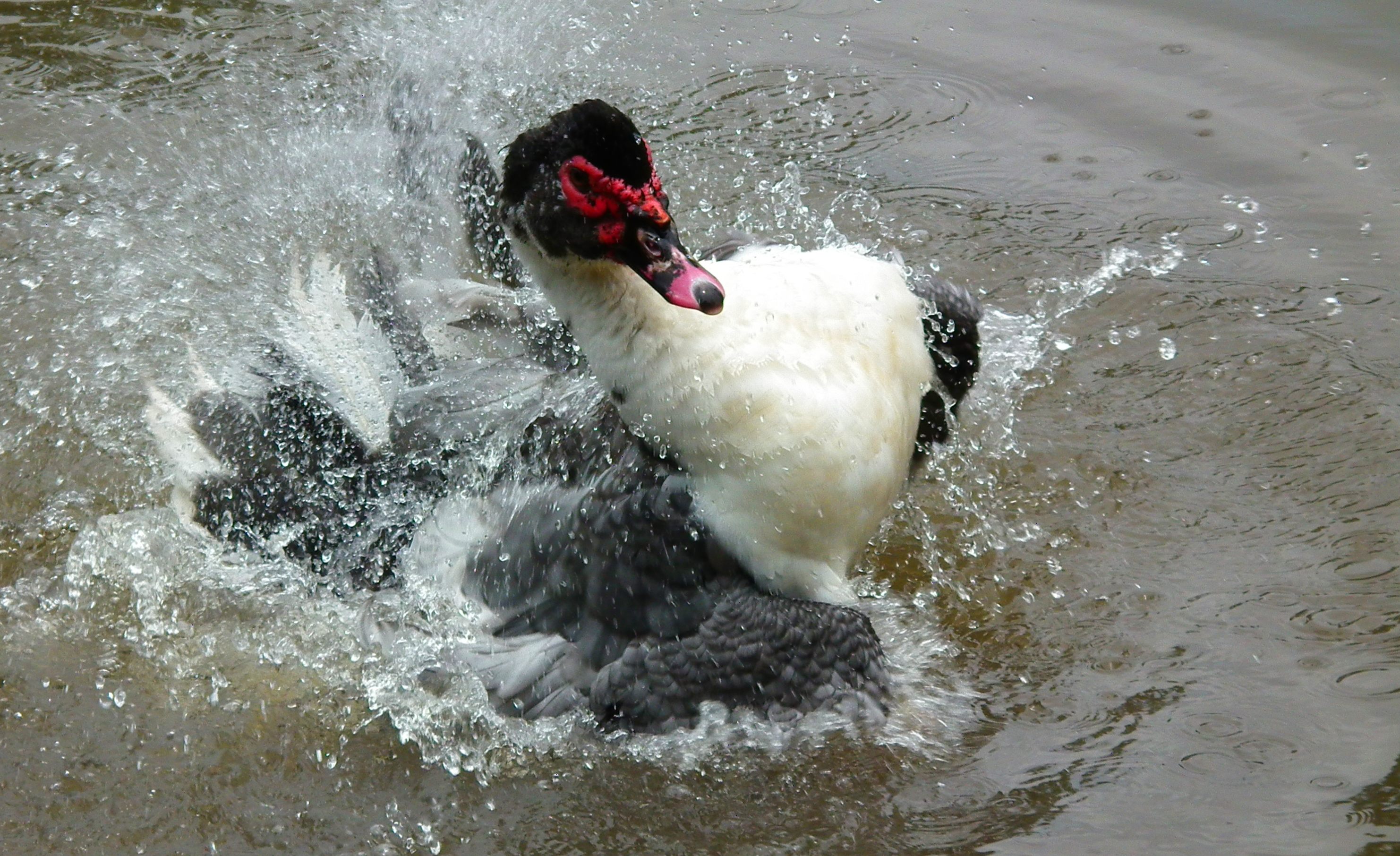
Zivotofsky and Amar spent a while talking to duck experts and observing Muscovy ducks in person, studying them to look for signs of dores behavior. They declare that Muscovy ducks are maybe slightly more aggressive than mallards, but that the reports on their violent nature are wildly overstated, and that, basically, domesticated Muscovy ducks are just… ducks. “Those seeking to prohibit the bird mobilized all tactics including utilized rumors, hearsay, suppression of facts, and simple lies,” they write in one of their papers.
The Muscovy duck is not the only New World poultry subject to this kind of debate. One rabbi, Rabbi Shlomo Kluger (1785-1869), wrote that literally every bird in the New World is forbidden, because there were no Jews there until recently and thus no mesorah. It is still not really settled whether turkey is kosher; most kosher Jews will eat it, citing that it is largely similar to a big chicken, that it has a peelable gizzard and a crop, that it is not a bird of prey. But there are still some Jewish families who will not eat turkey (which, incidentally, is called tarnegol hodu in Hebrew—literally, India chicken, because it came from the West Indies, sort of). Their reasoning is sort of a personal mesorah: Their families did not eat turkey, therefore they do not.
The case of the Muscovy duck cannot be settled because the rules themselves are not really known. It’s like introducing basketball to people who had never played basketball before, but had sort of heard about it. Should you dribble the ball? Well, I heard some other people did, so, yeah, I guess so. Can you kick the ball? I haven’t heard anything about that, so, sure, you can kick the ball. You can imagine the arguments that might ensue. Is the Muscovy duck kosher? Sure. And no. I don’t know.
Gastro Obscura covers the world’s most wondrous food and drink.
Sign up for our regular newsletter.















Follow us on Twitter to get the latest on the world's hidden wonders.
Like us on Facebook to get the latest on the world's hidden wonders.
Follow us on Twitter Like us on Facebook